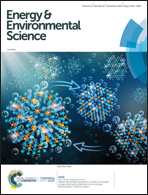The health and climate impacts of carbon capture and direct air capture
Abstract
Data from a coal with carbon capture and use (CCU) plant and a synthetic direct air carbon capture and use (SDACCU) plant are analyzed for the equipment's ability, alone, to reduce CO2. In both plants, natural gas turbines power the equipment. A net of only 10.8% of the CCU plant's CO2-equivalent (CO2e) emissions and 10.5% of the CO2 removed from the air by the SDACCU plant are captured over 20 years, and only 20–31%, are captured over 100 years. The low net capture rates are due to uncaptured combustion emissions from natural gas used to power the equipment, uncaptured upstream emissions, and, in the case of CCU, uncaptured coal combustion emissions. Moreover, the CCU and SDACCU plants both increase air pollution and total social costs relative to no capture. Using wind to power the equipment reduces CO2e relative to using natural gas but still allows air pollution emissions to continue and increases the total social cost relative to no carbon capture. Conversely, using wind to displace coal without capturing carbon reduces CO2e, air pollution, and total social cost substantially. In sum, CCU and SDACCU increase or hold constant air pollution health damage and reduce little carbon before even considering sequestration or use leakages of carbon back to the air. Spending on capture rather than wind replacing either fossil fuels or bioenergy always increases total social cost substantially. No improvement in CCU or SDACCU equipment can change this conclusion while fossil fuel emissions exist, since carbon capture always incurs an equipment cost never incurred by wind, and carbon capture never reduces, instead mostly increases, air pollution and fuel mining, which wind eliminates. Once fossil fuel emissions end, CCU (for industry) and SDACCU social costs need to be evaluated against the social costs of natural reforestation and reducing nonenergy halogen, nitrous oxide, methane, and biomass burning emissions.



 Please wait while we load your content...
Please wait while we load your content...